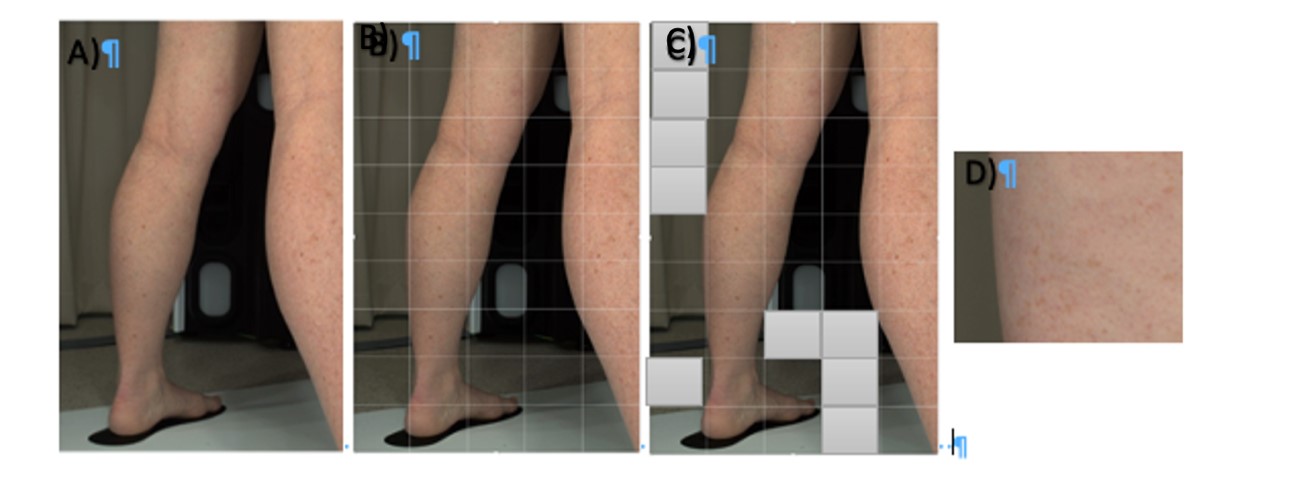A clinical protocol was created for the iToBoS Project at the Hospital Clinic in Barcelona, one of the objectives of which is to acquire full-body images of patients to use them as a protected database.
Those images undergo colour correction, anonymization, and processing before going to an anonymous 3D avatar. The main concern is to guarantee the confidentially of the images, clinical information and genetics.
In a first study of the iToBoS project, the images of 50 patients taken using a scanner with 96 cameras technology will be used to generate tools for anonymization. These images will undergo a pre-anonymization step to improve image quality and fix colour appearance for skin tones. In this step, a programmed computer will identify and blur the faces, tattoos, and other personal marks on the body. A manual check of images to ensure images have been appropriately de-identified will be completed. And finally, using a second programmed code, the images are then cut up to smaller tiles (Figure 1) and images with no skin are removed. The final image tiles (approx. 5x8 cm) are labelled with a participant ID numbered the x, y, z coordinates of where on the body the images are taken, and categorization of any skin spots/lesions within the image. Finally, more 100 patients will be included in the study and their anonymized images will be used for the iToBoS CAD (Computer Aided Diagnostics) development. Furthermore, these image data of participants with specific consent, will be shared with external research partners for the development of CAD tools. All this anonymization processes are in line with Data Protection laws, including the General Data Protection Regulation (EU) 2016/679 (GDPR), and any other nation or EU data protection law.
There are some challenges for the image skin analysis and the AI (Artificial Intelligence) and CAD tools development such as lesion detection and boundary segmentation in regional body images, and on lesion classification.A selection of non-identifiable skin images prepared in this study may be included in larger datasets for the analysis challenges.

Figure: An example of (a) raw image (b) how images are cut up into smaller tiles (c) image with less that 30% skin are removed, and (d) final image tile to be user for the iToBoS CAD development.
The Intelligent Total Body Scanner System, iToBoS, is an international project for developing an artificial intelligence (AI) assisted diagnostic platform for the early detection of melanoma. This project aimed to manufacture a total body device and a Computer Aided Diagnostic (CAD) tool that integrates clinical, genetic and image data.The iToBoS project has received funding from the European Union’s Horizons 2020 Innovative funding programme, under the Health, Demographic Change and Wellbeing section (Grant agreement ID: 965221). The purpose of this funding is an investment in better health for all. Research and innovation funded under Horizon 2020 contributes to the sustainability of health and care systems. This project involves 18 partners, who are all located within the European Union (including UK and Israel), except for The University of Queensland, located in Brisbane, Australia.
